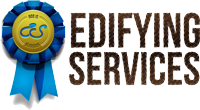Chapter 77 Return to the Middle East
At the end of September, 1999, we left Connecticut again for Turkey, but only touched down there briefly before continuing on to India where we were invited to be speakers in a conference for our workers there.
The conference center was in a beautiful, but remote area without medical care readily available. On our second day there, I woke up to find that the wound on my leg, caused by the flying rock, was infected: red, swollen, raised and throbbing.
We put some general salve on it that Barbara had in her purse and prayed for God to protect me. The next morning when I got up, all evidence of infection had disappeared, the throbbing was gone and it felt much better. It continued to heal just fine. I was very thankful for this touch from God: A God sighting of healing in a place with no doctors!
After visiting India, we continued on to Pakistan to visit our workers there. This was always an adventure, for most of our folks there worked in undeveloped rural areas.
Gary and Joan picked us up at the airport in a central city. We piled into their small van and headed out on the main road towards the much more primitive place where they worked. One disconcerting factor right off was that they drove on the left side.
The road shortly narrowed down to one paved lane and that is where the excitement started. Vehicles would hurtle towards each other on this one lane as if playing the game of chicken and at the last minute, they would swerve to their left onto the wide sand shoulder and fly by. Each car tried to keep at least the right side tires on the pavement, but if the other vehicle was a big truck, it was granted full possession of the road.
What made this especially nerve racking was that those wide sand shoulders were also full of other traffic: donkey carts, camel wagons, ox carts, bicycles, and pedestrians. All were heavily loaded, including the pedestrians, who carried loads on their heads. Everyone had to scramble to keep from being hit by the competing vehicles.
Then as evening came on, it got even more exciting. The lights of the oncoming vehicles blinded us, so when Gary swerved off the pavement at the last minute, he could not tell what might be on the shoulder. Everyone had to stay alert. At one point, I wondered if this might be the country’s method of population control at work!
The paved part of the road was really rough and the small fourteen-inch tires on Gary’s van magnified this. After an hour of this severe rattling, we had to ask him to stop so we could recover a bit.
He pulled off into a grove away from the road where we thought we might be able to relieve ourselves—there were no gas stations with toilets along the road—but immediately a crowd gathered. We found that this always happened in Pakistan, even when there was no one within sight, somehow people knew there was something to see and out of nowhere a crowd would form.
After our first trip to Pakistan, I came away with the impression that the main themes of life in that country were birds, beds and bicycles. Birds were everywhere, always circling overhead. Many were scavenger birds, feeding on the ever-abundant road kill. Others were crows and smaller birds that populated villages and fields.
The beds in Pakistan are a wooden frame with a woven rope area to lie on. In homes these were used for beds at night, but did double duty as couches or even tables during the day. People would sit on the edges of the bed, draw their legs up under them, and put their dishes in front of them on the woven surface. Even roadside restaurants used these beds as their table/chair combination.
When farmers went out to work in the fields, they often took a rope bed along with them in their wagon or on their donkey. They used it as a place to eat lunch and then take an afternoon nap in the shade. My guess is that it kept them protected from dangers on the ground: scorpions, snakes and biting insects.
Bicycles are the main means of transportation among the poor people, who make up the vast majority of the population. The streets in towns were full of bikes, as were the shoulders of main roads. They were often used to transport heavy loads with the owner walking beside and pushing it. Whole families often rode on one with the wife sitting “side saddle” on a rack over the back wheel while the children sat on the handlebars.
After our rattle-bump two-hour journey with Gary, we arrived in his town after dark. I was sitting in the front passenger seat when we went around a corner and came face to face with a camel standing beside the road; he swung his head around and looked at me through the windshield. Gary was able to screech to a halt before we hit him, but my eyes were big as saucers and my pulse was sky high as the camel and I continued to look at each other through the glass!
Later on during this visit we went to another small city to talk with more of our workers. Doug took me on his motorcycle when he went shopping. As we weaved through the traffic of small pickups, donkey carts, bicycles, motorcycles and pedestrians, I had to keep my knees tightly pressed against the motorcycle to avoid hitting any of these as we sped by. I could just envision a knee getting caught on some other vehicle and my leg being ripped right off!
The road was unpaved and had been bulldozed sometime in the past and just left that way, so there were piles of hard-packed dirt that we drove over. It felt like we were part of a motocross race, with the other competitors being donkeys, camels and pickups!
We drove across a bridge above a canal with a stench that was like nothing I’d ever smelled before. It made anything I’d experienced in my years of farm work seemed like perfume in comparison! On one side of the bridge was a little restaurant that sold roasted chickens.
“Their food is really good,” said Doug, “but I don’t usually eat it here.” I could understand why.
A little further down the road Doug stopped at a little stand where a man was sitting on a platform. Doug spoke to him; he reached into a cage next to him and pulled out a chicken. He produced a knife, cut off its head, made some deft cuts along the body and then placed it between his feet. Grasping the skin at the neck, he expertly pulled it off, feathers and all, back over the body and handed Doug a chicken ready for roasting.
Two nights later Doug and his wife took us out for supper. It was after dark when we get got into his old Toyota SUV. He drove us across the smelly canal, then turned onto a humty bumpy road parallel to it where we were privileged to breath in more of the canal’s highly perfumed smells.
Then Dough turned off onto what he called “restaurant row.” It had even more humps than the previous roads and it felt more like we were driving over waves than dirt.
Both sides of the street were lined with restaurants, little tent-like structures, each equipped with several rope beds out front, serving as table and chairs. Most of these beds were occupied by dark men who smiled at us with gleaming white teeth.
At that point I felt overwhelmed by culture shock and had to restrain myself from jumping out and running away! The smells, the humps, the sights and those gleaming white teeth in the dark were all so foreign, so strange, just…too much. I admired the workers who willingly lived and worked in those conditions.
At the end of our visit we were glad that Doug drove us back to the airport, as his vehicle had big sixteen-inch tires that rode more smoothly over the rough road. And by going in the daytime there were no “dodge-em” games in the dark with the camels and donkeys and bicycles beside the road.



